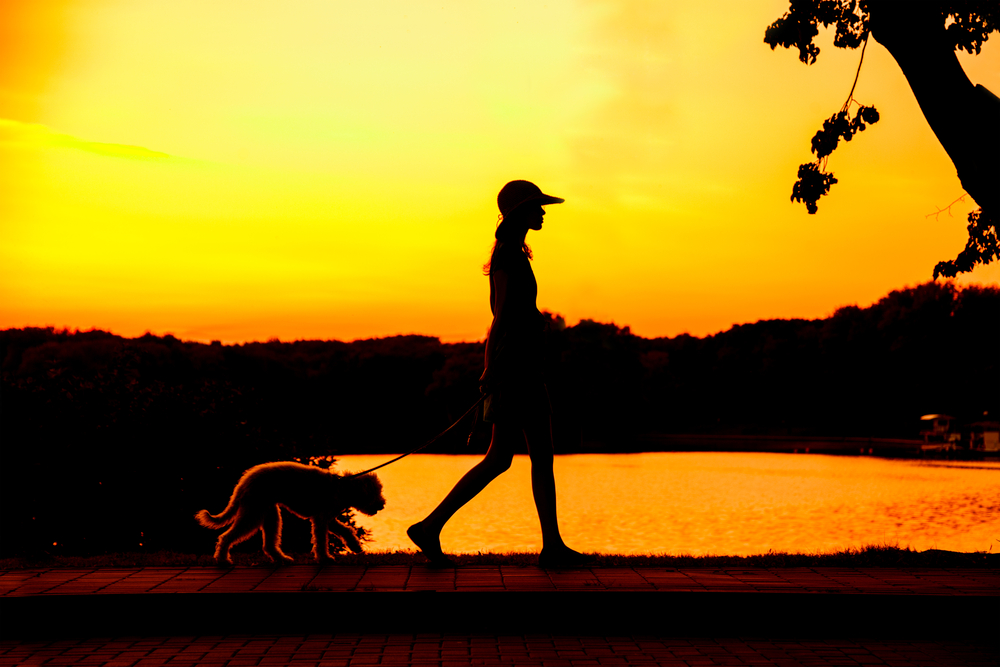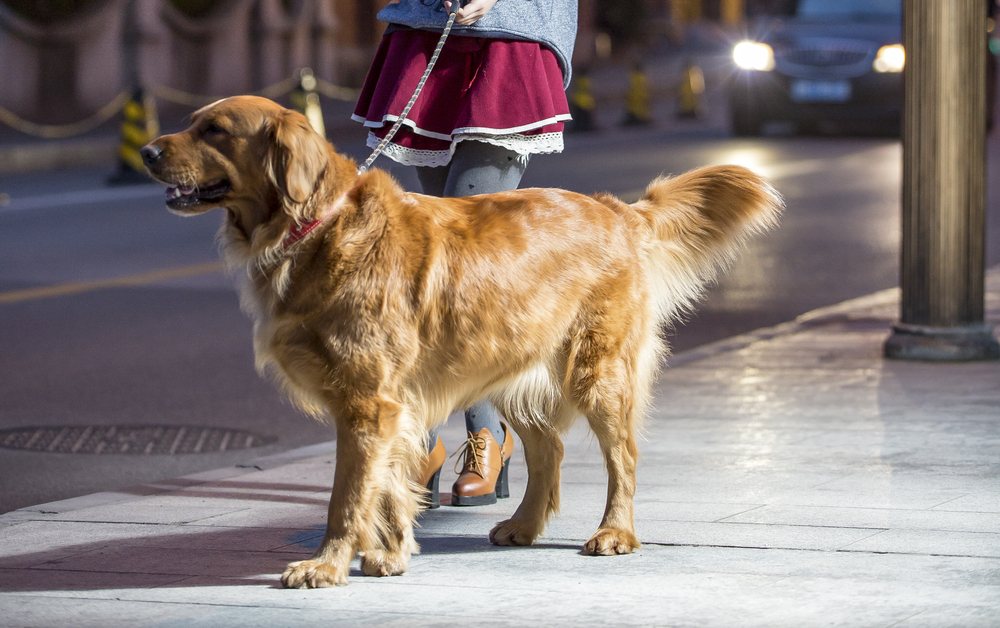Seasons change. Weather is unpredictable. But one thing remains constant. Your dog needs his daily walk. And if you’re being honest, you need one, too. Walking is good for both of you. Not only is it great physical exercise, but the aerobic activity also benefits you and your dog’s state of mind, regardless of whether your pace is fast or slow.
So, what do you do when the temperatures are too high or the days just aren’t long enough to fit in a walk during daylight hours? Don’t worry, you’re in good company. Here’s what you need to know before you take your dog for a walk at night.

Choose your route carefully
If possible, stay on well-lit sidewalks or drive to a park with a designated walking path. If you must walk on the road, choose one with the least amount of traffic. Walk facing the oncoming cars so you can see them as they approach. And when you cross the street, make an effort to do so at a marked crosswalk or intersection where motorists are accustomed to seeing pedestrians.
Carry identification
Nobody ever expects to have an accident, but it’s always a good idea to be prepared. Place identification and health care cards in your pocket before you head out the door, just in case an emergency occurs.
That goes for your dog, too. Make sure he is wearing his collar and identification tags. That makes it easier for him to be returned to you in the event the two of you become separated.
Leash up
No matter how obedient your dog is, it’s just safer to put him on a leash when you’re walking after dark. A lot of wild animals are active at night, which might be tempting for your dog to chase. He’ll be less likely to dart into the road after something that catches his attention if he’s tethered to you.
Wear reflective gear
Both you and your pup should be visible to drivers and cyclists whenever you’re out on public roadways after dark or when weather conditions limit visibility.
According to the Governor’s Highway Safety Association, 6,205 pedestrians were killed in traffic accidents in 2019, which accounted for 17% of all traffic fatalities. One way to reduce the likelihood of becoming a statistic is to wear high-visibility safety clothing.
Look for apparel that is comfortable and easy to get on and off, otherwise you won’t want to wear it. And consider the season. If it’s cold outside, make sure your outerwear has reflective properties or purchase reflective gear large enough to wear over it.
The same goes for your pup. Outfit him in a reflective jacket during cold-weather months and a bandana in the summertime or purchase a collar and leash with rechargeable LED lighting.

Wear a hands-free flashlight
Even if you are taking a path you know well, everything looks different in the dark. That’s why it’s always best to ensure your pathway is illuminated. And since you’ll be holding a leash and, presumably, picking up your dog’s waste, you’ll want to have your hands free to manage all that during your walk. Look online for a runner’s headlamp or light source that clips to your clothing.
Don’t forget your phone….
But don’t use it while you’re walking. Any text or phone call you receive while you’re walking your dog at night can be answered after you return home safely. Refrain from using earbuds to listen to music, too. You’ll want to be able to hear all the sounds around you — like cyclists or vehicles coming up behind you. Instead, keep your phone in your pocket in case of an emergency so you can call for help.
Without question, one of the best ways to strengthen your bond with your dog is by engaging in activities together — and walking is one that benefits you both. Darkness doesn’t need to be a deterrent as long as you take the proper safety precautions. Take along a friend whenever possible. When you can’t, make sure at least one friend or family member knows where you’re going. And don’t forget to check with your doctor and veterinarian before you begin any new physical activity. The effort you put into your health and safety before you head out the door can make the time you and your dog spend together even more rewarding.


